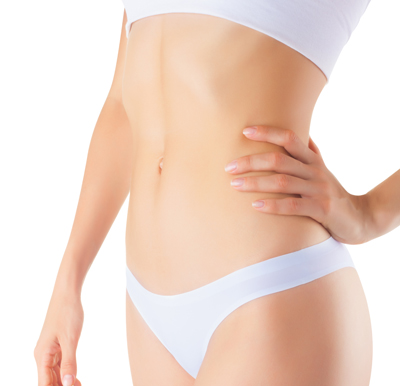More than just a cosmetic procedure — ‘tummy tuck’ reduces back pain and incontinence

In addition to restoring the pre-pregnancy shape of the abdomen, abdominoplasty (‘tummy tuck’) surgery with muscle repair can improve back pain and urinary incontinence after childbearing, reports a study in the March issue of Plastic and Reconstructive Surgery®.
Although abdominoplasty is classified as a cosmetic procedure, it also improves two of the most common physical complaints experienced by women after labor and delivery. According to the new research “Abdominoplasty has a proven functional benefit as well as a cosmetic benefit,” comments lead author D. Alastair Taylor, FRACS, of The CAPS Clinic in Deakin, Australia.
Abdominoplasty Improves Common Post-Childbearing Symptoms
The study included 214 women undergoing abdominoplasty with repair of the abdominal muscles at nine Australian plastic surgery centers. Many women seek tummy tuck surgery to restore the shape and appearance of the abdomen after childbearing. The women’s average age was about 42 years, with an average of 2.5 deliveries.
Before and after surgery, the women completed questionnaires rating their disability from back pain and urinary incontinence: two very common problems after childbearing. In the preoperative questionnaires, about 51 percent of women had moderate to severe disability from back pain, while urinary incontinence was a “significant concern” for 42.5 percent.
On follow-up questionnaires at six weeks and six months, scores for both problems showed major improvement. At six months, only nine percent of patients still had moderate disability from back pain. Urinary incontinence remained a significant problem for less than two percent of women.
Scores for back pain continued to improve from six weeks to six months after abdominoplasty, while urinary incontinence improved no further after six weeks. The women underwent several different types of abdominoplasty surgery; the improvements in back pain and incontinence were similar regardless of the technique used.
Nearly 128,000 abdominoplasty procedures were performed in the United States in 2016, according to ASPS statistics. Tummy tuck is sometimes performed as part of “mommy makeovers” to restore the shape and appearance of a woman’s body after childbearing.
The new findings — including before-and-after measurements in a large group of plastic surgery patients — are consistent with previous case reports of improvement in back pain and urinary incontinence after abdominoplasty. These functional improvements may result from restoring strength and stability in the abdominal and pelvic region as the operation incorporates repair of the abdominal muscle separation (rectus diastasis) that can occur after pregnancy.
“By reducing the problems of back pain and incontinence, abdominoplasty with rectus repair leads to a better life for women after childbearing,” Dr. Taylor comments. He believes that health insurance plans should recognize that abdominoplasty has functional benefits, beyond the cosmetic improvement offered.
“The results demonstrate that tummy tucks do have functional benefits, as well as cosmetic ones, particularly in the postpartum population,” comments Editor-in-Chief Rod J. Rohrich, MD, in a featured video on the Plastic and Reconstructive Surgery website. “If you are done having children, and still suffering from back pain or incontinence, you may consider an abdominoplasty as a surgical solution.”


